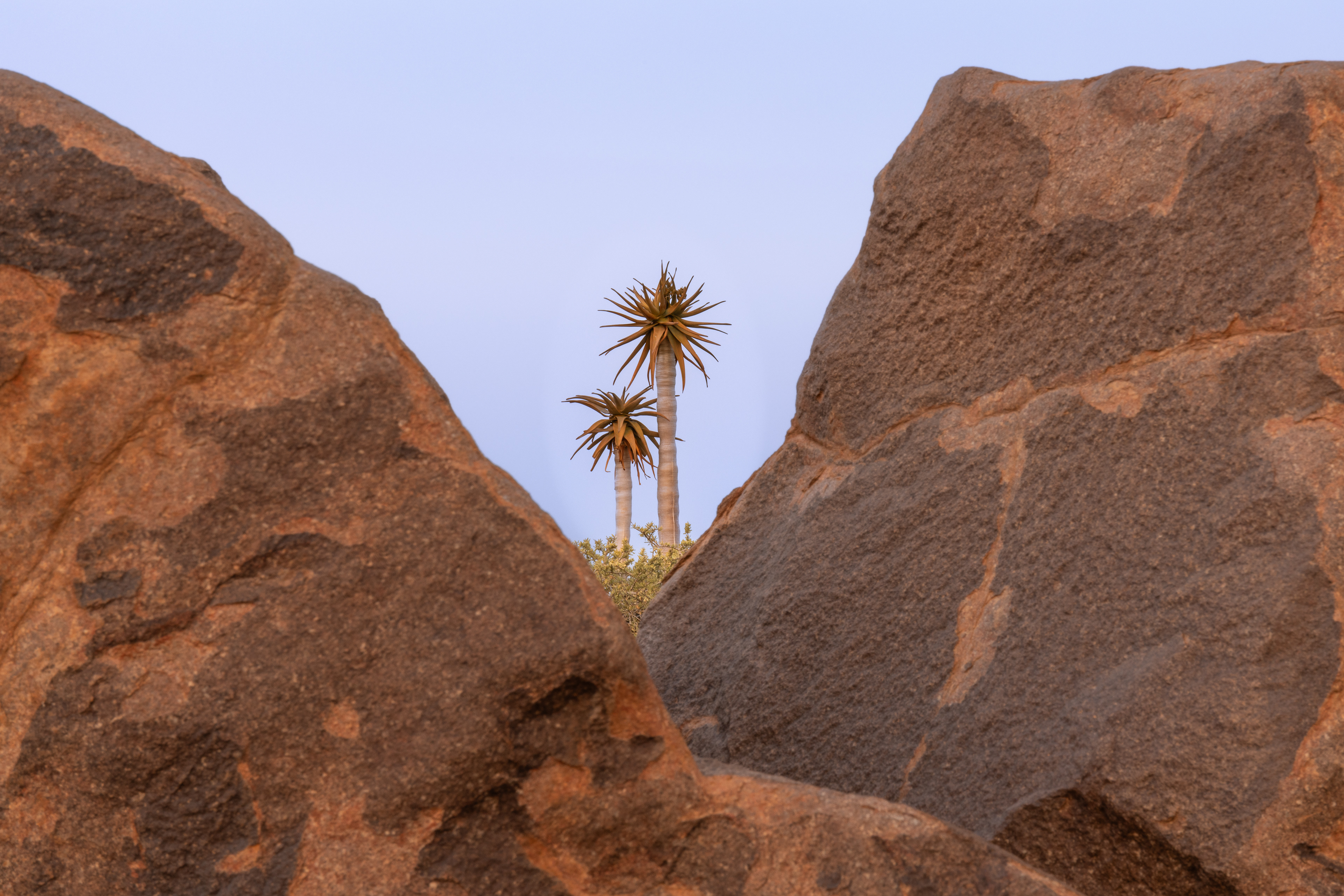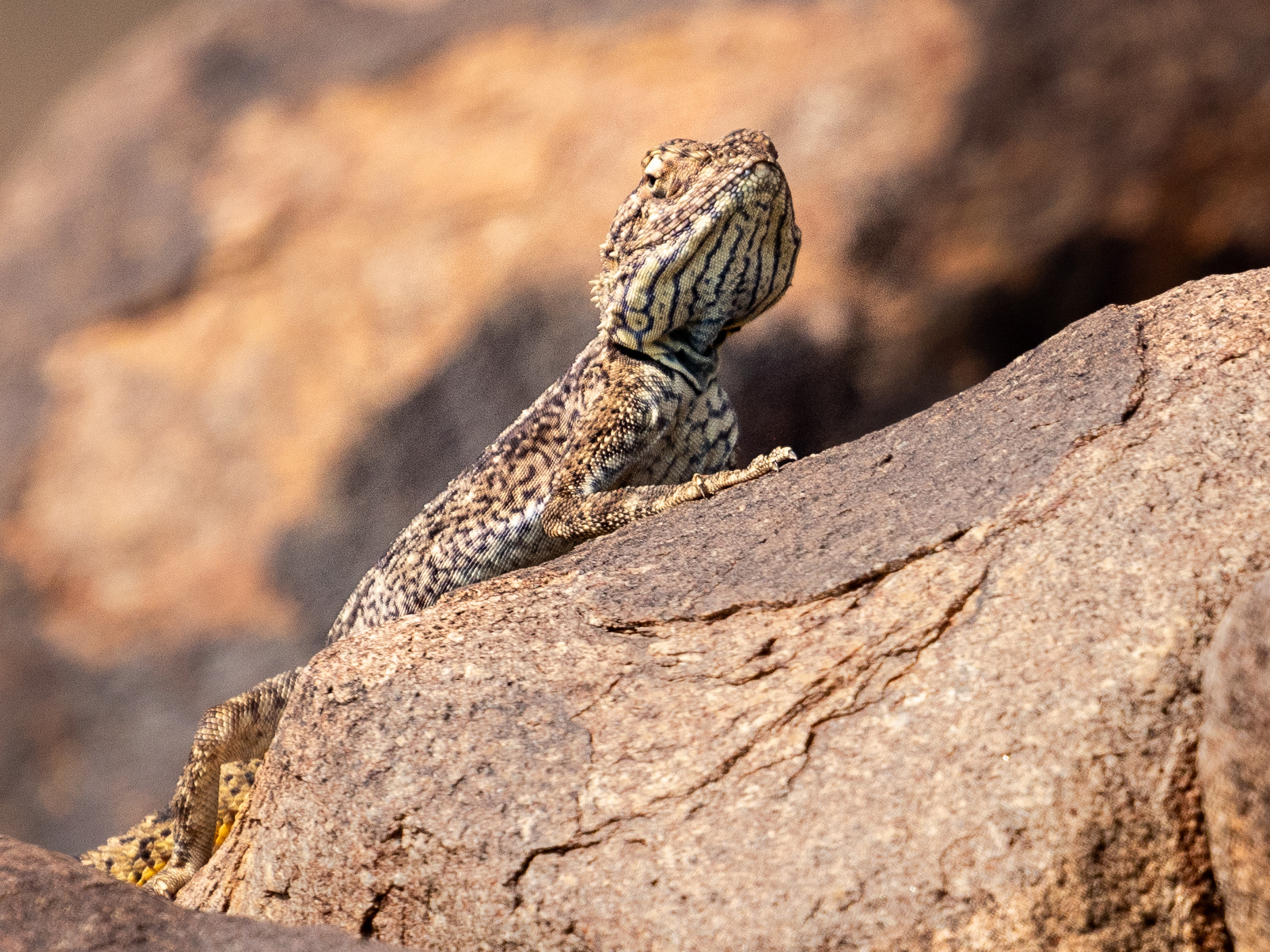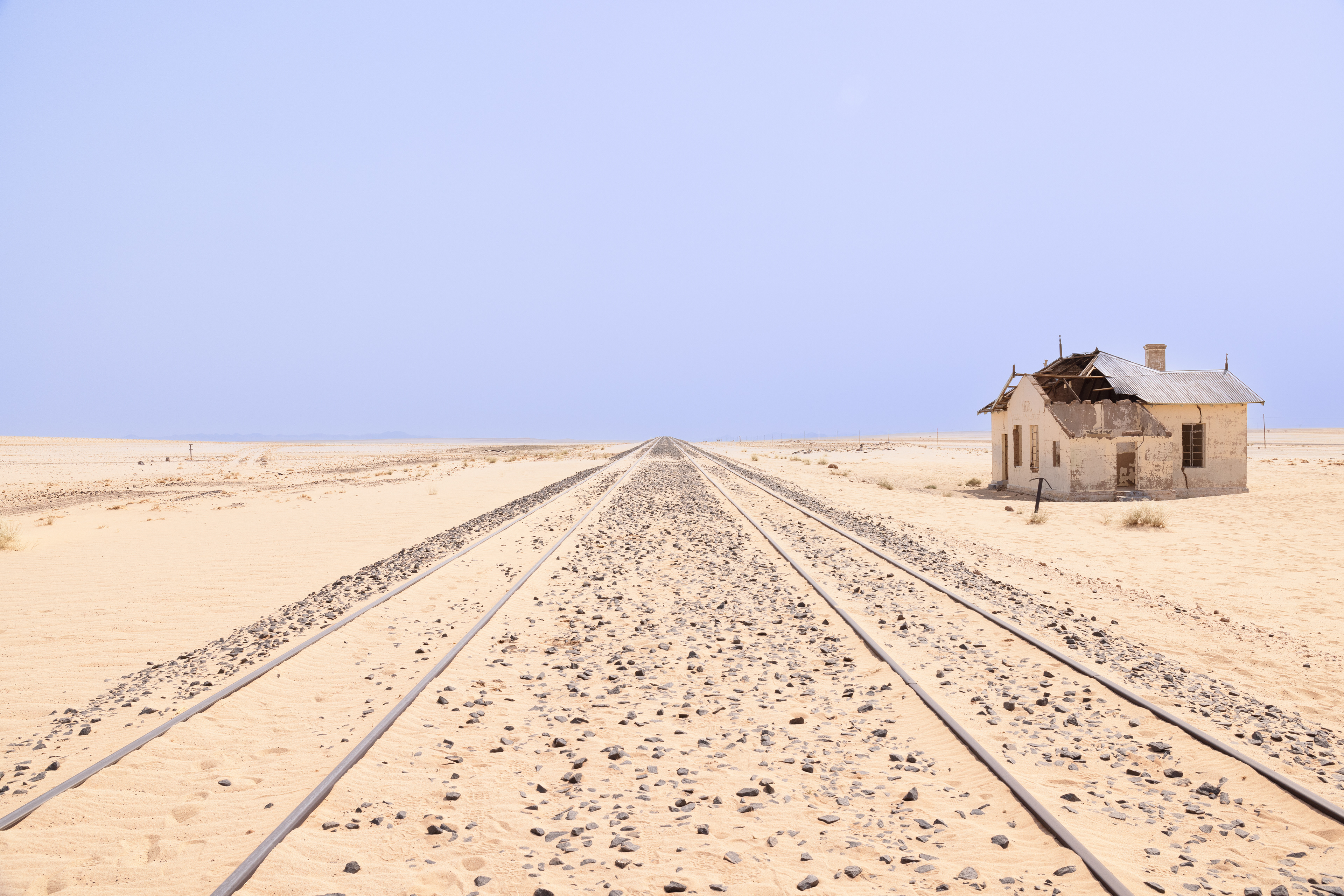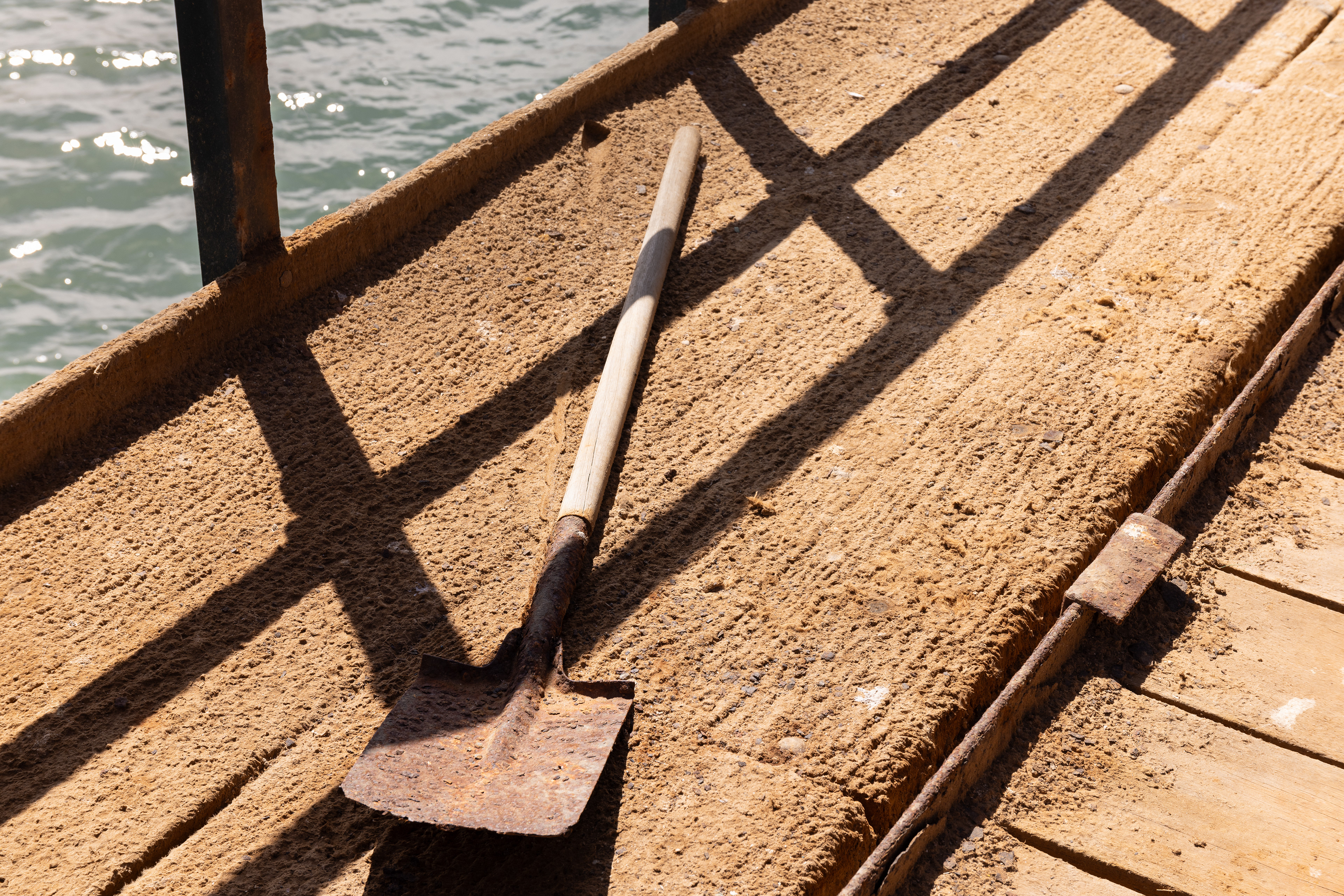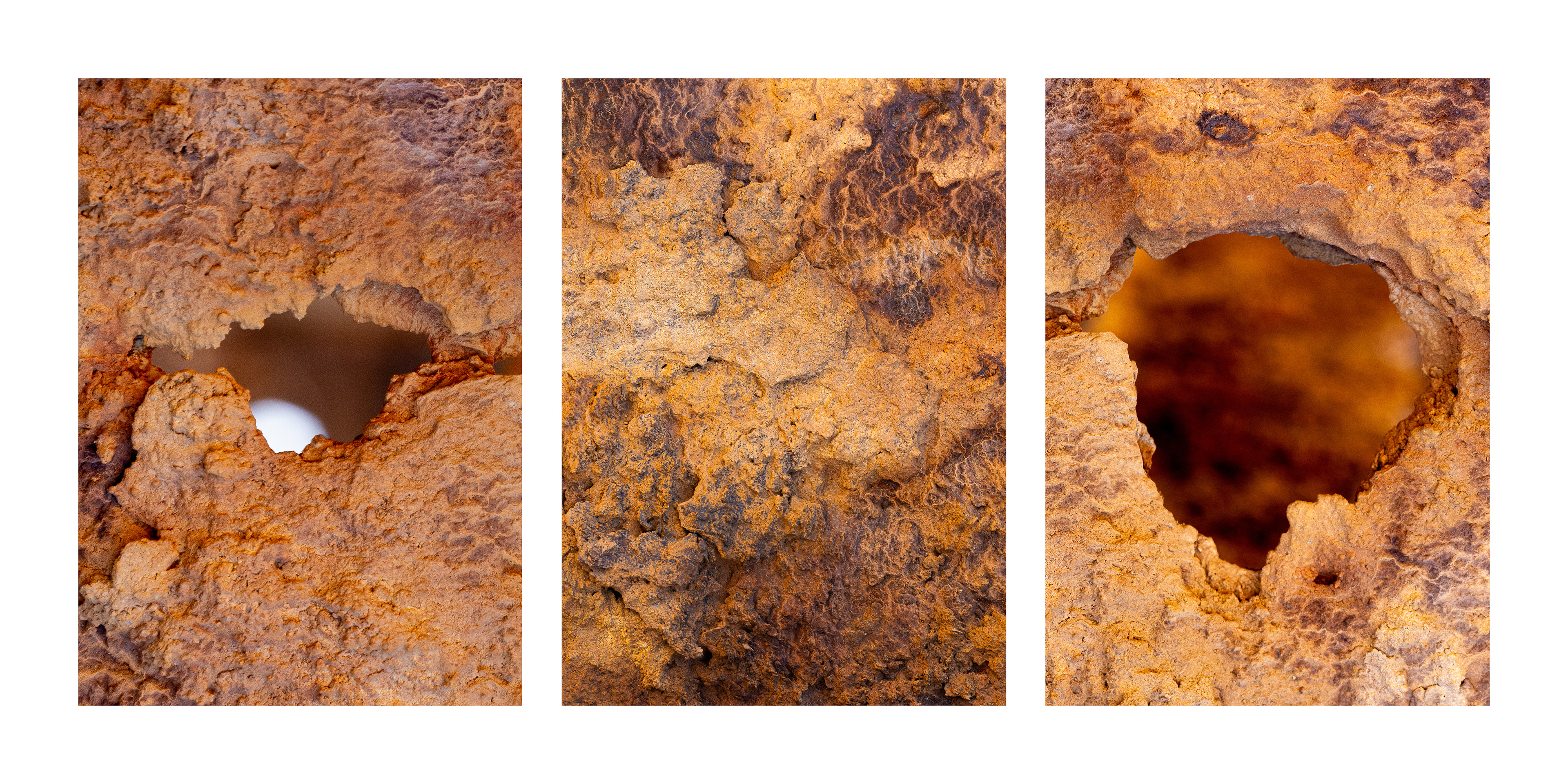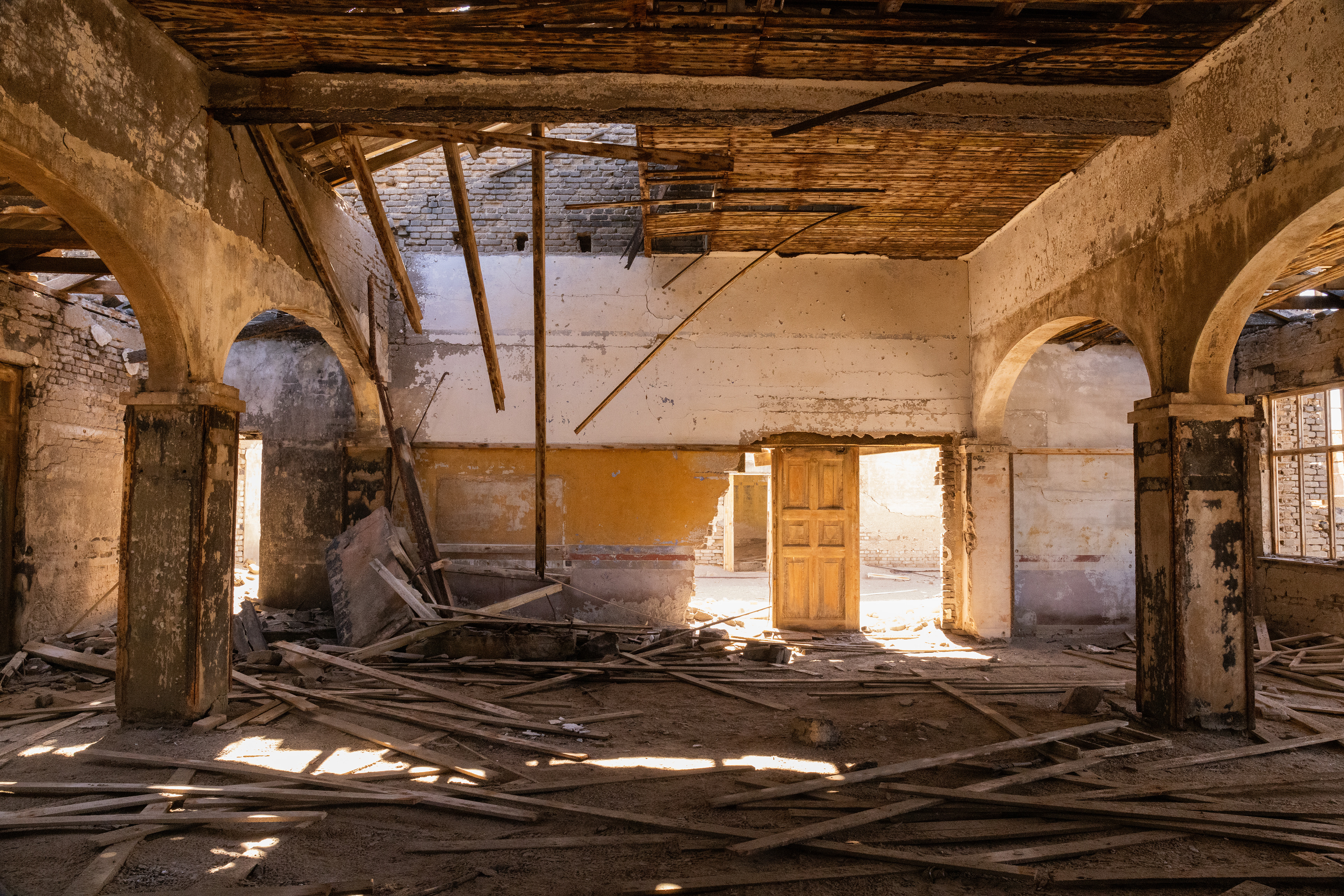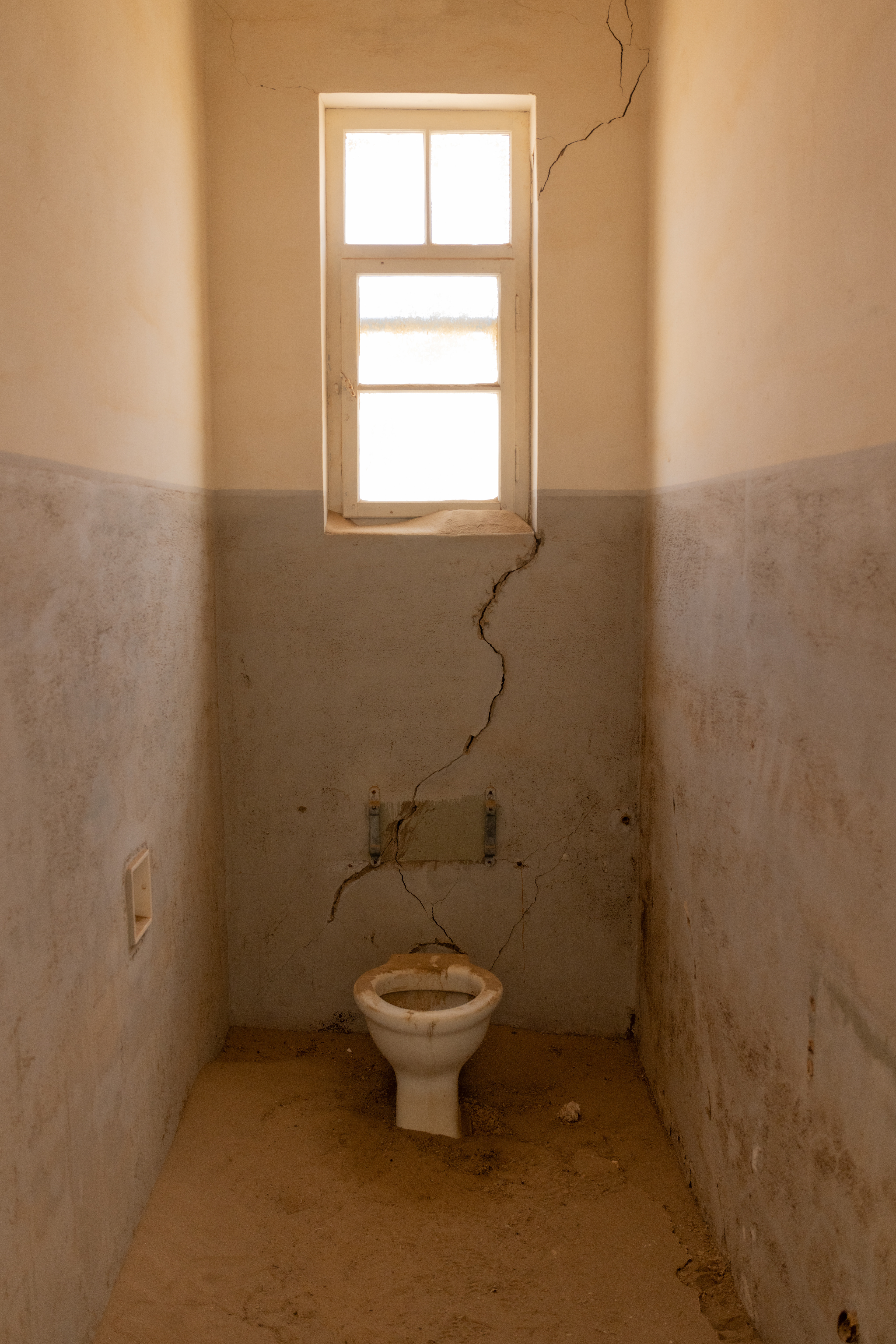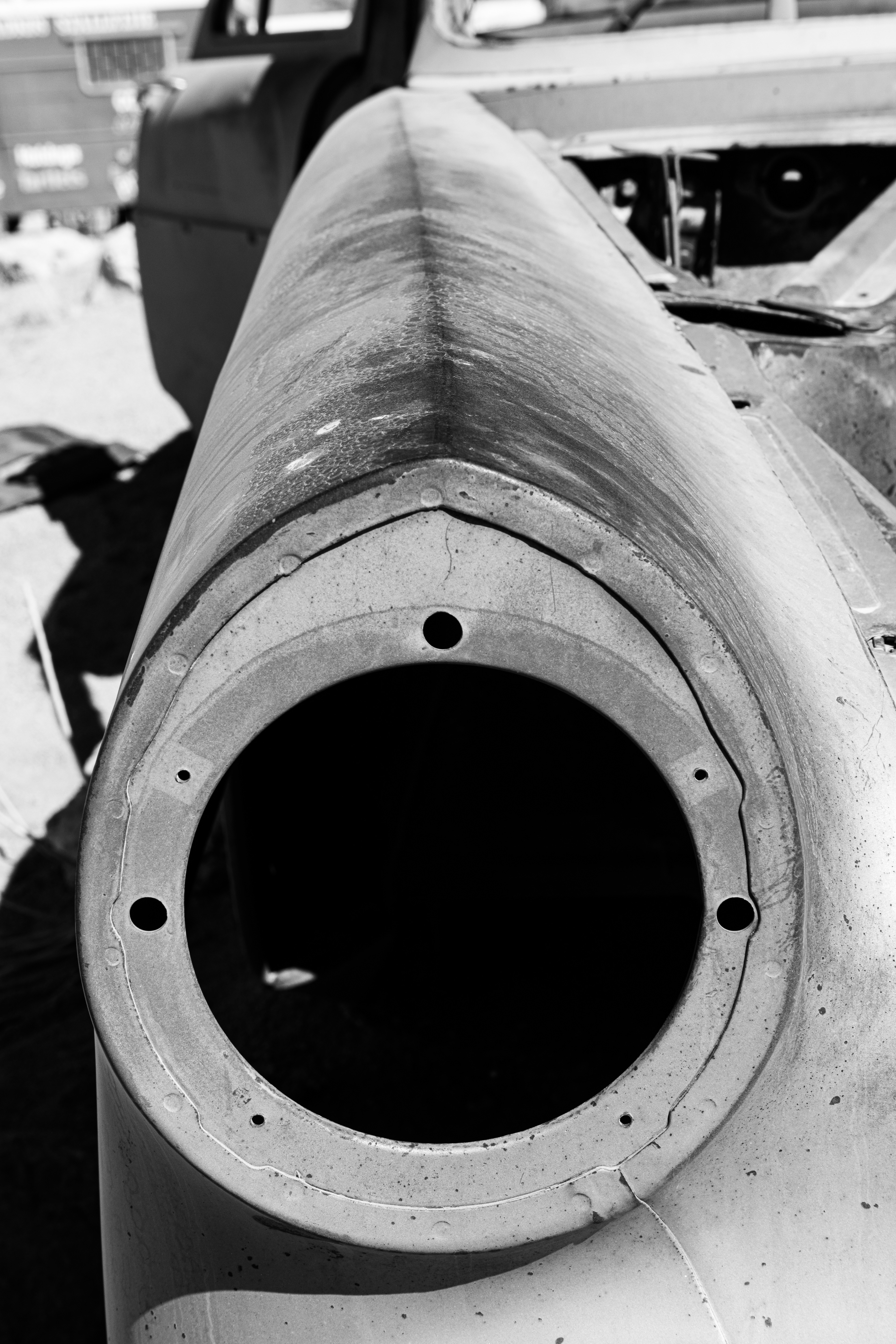
Quiver Tree Forest I - Forest: Namibian style. In such a dry, arid country, this truly is a forest by Namibian standards. Quiver Tree Forest, Keetmanshoop, Namibia.

Quiver Tree Forest II - Technically, the quiver trees are not trees at all, but are part of the genus Aloe, called Aloe Dichotoma. Quiver Tree Forest, Keetamnshoop, Namibia

Quiver Tree Forest III - These succulents were named Quiver Trees by ancient bushmen who used to make quivers for their arrows out of the bark. Quiver Tree Forest, Keetmanshoop, Namibia.

Between a Rock and a Hard Place - For me, this captured the essence of the landscape: the odd flourishing plant or two between dry, rocky outcrops. Quiver Tree Forest, Keetmanshoop, Namibia.

Quiver Tree Forest IV - This line up of quiver trees in descending size into the distance seemed to be a countdown to sunset. Quiver Tree Forest, Keetmanshoop, Namibia.

Quiver Tree Forest Bark - The bark produces all manner of interesting shades, patterns and textures. Quiver Tree Forest, Keetamnshoop, Namibia.

Quiver Tree Forest V - The quiver trees are succulents which store water in their leaves, fibrous trunk and branches. Quiver Tree Forest, Keetmanshoop, Namibia.

Dawn in the Quiver Tree Forest - I managed to catch the rising sun between these two quiver trees. Quiver Tree Forest, Keetmanshoop, Namibia.

Light Painted Quiver Trees - The Milky Way can be seen above the trees. Quiver Tree Forest, Keetmanshoop, Namibia.

What you looking at? - This little fella was warming himself in the sun. He looked at me and I looked at him - long enough to capture a shot. Quiver Tree Forest, Keetmanshoop, Namibia.

Garub Railway Station I - On the railway between Lüderitz and Aus, this railway station was built in 1906 but fell into disuse many years ago. Garub, Namibia.

Garub Railway Station II - The railway line is currently out of commission following a derailment in April 2023. Garub, Namibia.

Missed the Last Train Home - A lonely figure seems to add to the feeling of abandonment. Garub, Namibia.

Room With a View - The Namibian sun: hot inside and outside. Garub, Namibia.

Garub Railway Station III - The broken roof casts interesting shadows in the bright sun. Garub, Namibia.

Garub Railway Station IV - Garub, Namibia.

Buffer Stop - They water tower near the siding was crucial for locomotives in the days of steam. Garub, Namibia.

Garub Railway Station V - Garub, Namibia.

Garub Railway Station VI - Garub, Namibia

Grazing All Day Long - The Graub horses amazingly eek out a living in the desert. At this time, there had been a "lot" of rainfall and the horses didn't bother going to the feeding stations because there was "so much grass"! Garub, Namibia.

Elizabeth Bay I - The Elizabeth Bay diamond mine was built between 1924 and 1926. It was operational only a few years, being abandoned in 1931. Eizabeth Bay, Namibia.

Emergency Stop! - It feels like the Emergency Stop button was pressed many years ago and never restarted. Elizabeth Bay, Namibia.

Resourceful Nature - This cormorant built her nest underneath a derelict pier, free from human interference. Elizabeth Bay, Namibia.

Walking the Plank - Elizabeth Bay, Namibia.

Down Tools - Looking for all the world like a worker just dropped his tools when the mine was abandoned nearly 100 years ago. Elizabeth Bay, Namibia.

Desiccated Hyena - A hyena found its way down the steps of one of the basement buildings to die. Sheltered from what little rain there is, and with such a dry atmosphere, the body has been desiccated, preserving it from decomposition. By all accounts, it has lain like this for at least five years. Elizabeth Mine, Namibia.

Elizabeth Bay II - I was fascinated by the wonderul colours of this roof inside one of the buildings. Elizabeth Bay, Namibia.

Elizabeth Bay III - Elizabeth Bay, Namibia.

Elizabeth Bay IV - Elizabeth Bay, Namibia.

Elizabeth Bay V - Elizabeth Bay, Namibia.

Rust Landscape - There may not be much rain, but 90 years of weather still has its effect. Elizabeth Bay, Namibia.

The Weight of the World on Your Shoulders - Elizabeth Bay, Namibia.

Elizabeth Bay VI - Elizabeth Bay, Namibia.

Open Plan - Elizabeth Bay, Namibia.

Elizabeth Bay VII - Elizabeth Bay, Namibia.

Elizabeth Bay VIII - Elizabeth Bay, Namibia.

Elizabeth Bay IX - Elizabeth Bay, Namibia.

Elizabeth Bay X - Elizabeth Bay, Namibia.

Kolmanskop I - Kolmanskop town sprang up after a railway worker discovered a sparkling stone in the sand, which proved to be a diamond. Kolmanskop, Namibia.

No Hot Water - Kolmanskop, Namibia.

Power Cut - Early 20th Century electrics. Kolmanskop, Namibia.

Kolmanskop II - At its peak, approximately 300 German adults, 40 children and 800 Owambo contract workers lived in the town which developed its own German culture. Kolmanskop, Namibia.

Kolmanskop III - The town started to decline in WWI as the diamond field started to deplete. When a richer diamond-bearing deposits were discovered 270km to the South in 1928, inhabitants abandoned their homes and possessions in a rush to the new pickings. Kolmanskop, Namibia.

Kolmanskop IV - Kolmanskop, Namibia.

Kolmanskop V - With its final abandonement in 1956, the desert set about reclaiming its territory. Kolmanskop, Namibia.

Kolmanskop VI - WIth its abandonment and no maintenance, the buildings are falling down. Kolmanskop, Namibia.

Komanskop VII - With broken windows and doors, nature is left unfettered in its mission to reclaim its territory, depositing sand dunes inside the buildings. Kolmanskop, Namibia.

The Green Room - Kolmanskop, Namibia.

Nobody Calls Anymore - It's a long time since this hallway welcomed visitors. Kolmanskop, Namibia.

The Red Room and the Green Room - The decor of these two rooms remains remarkably vibrant after so long. Kolmanskop, Namibia.

The Door Won't Shut - Kolmanskop, Namibia.

The Zebra Room - With the roof tiles gone, the rafters provide an almost surreal effect. Kolmanskop, Namibia.

Hospital Rounds - Kolmanskop once boasted its own hospital. Kolmanskop, Namibia.

Run Out of Toilet Cleaner - Hospital block, Kolmanskop, Namibia.

Kolmanskop VIII - Kolmanskope, Namibia.

Sea Monster - These breakers look for all the world like a three-headed sea monster. St. Diaz Point, Namibia.

Staircase, Lüderitz Railway Station I - The Lüderitz railway station was completed in April 1914, commissioned by the German Imperial Government. It is indicative of the emergence of modern architecture in Germany at the time. Lüderitz, Namibia.

Staircase, Lüderitz Railway Station II - It's once contemporarily modern architecture is now looking tired and worn. Lüderitz, Namibia.

Flat Tyre - Helmeringshausen boasts its own collection of abandoned and derelict cars. Helmeringshausen, Namibia.

Two Tone Paintwork - Helmeringshausen, Namibia.

The Best: The Original - Helmeringshausen, Namibia.

Watch Your Speed! - Helmeringshausen, Namibia.

Running on Empty - Helmeringshausen, Namibia.

Tireless - Helmeringshausen, Namibia.

Loose Wheel Nuts - Helmeringshausen, Namibia.

Bumper Sticker Required - Helmeringshausen, Namibia.

Chevrolet Smile - Looks like this old Chevrolet is grinning at the camera. Helmeringshausen, Namibia.

Lost Key - Never mind - I'm sure it will force open. Helmeringshausen, Namibia.

Ready to Spill Your Guts - Helmeringshausen, Namibia.

Deadvlei I - Deadvlei gets it name from the English "Dead" and Africaans, "vlei" meaning marsh. Deadvlei, Namibia.

Deadvlei II - The vlei is a white clay pan, a dense, compact, slowly permeable layer. Deadvlei, Namibia.

Deadvlei III - The white clay pan, parially in the shade of a giant sand dune in the early morning sun, looks like a snowscape beyond a frozen river. The sand dune behind, in early morning shadow, could be mistaken for a rainy day. Deadvlei, Namibia.

Deadvlei IV - The vlei was formed after rainfall when the Tsauchab River flooded many years ago creating marhsland that enabled camel thorn trees to grow. Later, as sand dunes encroached they cut off the water supply and the marsh was desiccated. Deadvlei, Namibia.

Deadvlei V - With so little rain, the camel thorn trees died between 500 and 1,000 years ago. Because of the lack of moisture they do not decompose but remain as they died. Deadvlei, Namibia.

The Lonely Trek - Deadvlei, Namibia.

Sossusvlei I - Sossusvlei, Namibia.

Sossuslvei II - Sossusvlei, Namibia.

Sossusvlei III - Sossusvlei, Namibia.

Sossusvlei IV - Sossusvlei, Namibia.

Sossuslvei V - Sossusvlei, Namibia.

Deadvlei VI - Deadvlei, Namibia.

Deadvlei VII - I was fascinated by the long shadows cast in the early morning light. Deadvlei, Namibia.

Twins - Deadvlei, Namibia.

Deadvlei VIII - Deadvlei, Namibia.

Marsh Monster - This dead tree looked for all the world like it was an ancient marsh monster that had been instantly petrified as it rose up for a kill. Deadvlei, Namibia.

Sossusvlei VI - Sossusvlei, Namibia.

Sossusvlei VII - Sossusvlei, Namibia.

Sossusvlei VIII - Sossusvlei, Namibia.

Sossuslvei IX - Sossusvlei, Namibia.

Run Into the Ground - Solitaire, Namibia.

Broken Down - Solitaire, Namibia.

Nature Will Find a Way - Solitaire, Namibia.

Light Out - Solitaire, Namibia.

The Three Faces of Despair - Solitaire, Namibia.

Zeila - The Zeilia ran aground on the Skeleton Coast in 2008. The long exposure gives intresting bands of waves across the sea. Skeleton Coast, Namibia.

Lonesome - It never ceases to amaze me how nature can eek out an existence in such a harsh environment: no visible soil and scorching hot desert sun. Spitzkoppe, Namibia.

Last Light in Spitzkoppe - Spitzkoppe, Namibia.

Milky Way Over the Bridge - The dark skies of Namibia provide some amazing views of the Milky Way. Spitzkoppe, Namibia.

Early Morning Light in Spitzkoppe - Spitzkoppe, Namibia.



